
Evoking the open-air feeling of sport plane flying from the 1930s, the single-seat Pober Pixie, with its parasol wing and open cockpit, is a playful and happy-spirited flying machine.
NX321PX was completed by co-owners Rick Gritters and Tom Vander Linden of Pella, Iowa.

Photo by Shane and Megan Vande Voort
Designed by Paul Poberezny in 1974, the Pixie’s appealing appearance is similar to a Heath LNB-4, and both aircraft have a Clark Y airfoil.
“The airplane itself is a takeoff of the old Heath parasol airplanes from the 1920s and ’30s, very similar to the last model that Heath built, but the Pixie has different wing struts and landing gear,” explains Rick. “It also has frieze-type ailerons, the tail feathers are hinged differently, and the shape of the fuselage is different.”

Co-builders Rick Gritters and Tom Vander Linden with their Pober Pixie. Photo by Susan Vander Linden
Rick, who first soloed in a Cherokee 140 on his 16th birthday, and has restored a Luscombe 8A and a Cassutt, enjoyed completing the Pixie. He has a soft spot for vintage-type airplanes — he also owns a Stinson 108, so he was naturally attracted to the Pober Pixie design.
“I bought it as partial project in 2010,” he says. “It was started by a gal up in northern Wisconsin in 1977. She sold it, and the project bounced around the country for several years, with not a lot being done, and some of what was done shouldn’t have been!”
“The Pixie is also similar to a Baby Ace, and it looked like a fun project,” he continues. “Tom Vander Linden has been a friend since high school. I taught him to fly in 1988 and he joined with me as co-builder.”
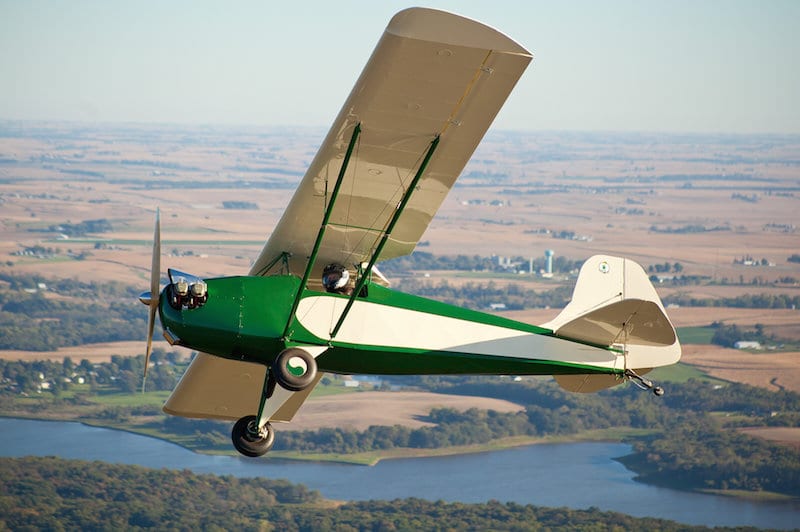
Photo by Shane and Megan Vande Voort
The project resembled an airplane when purchased — the basic fuselage was welded and on the gear, and the wood wings were mostly completed — yet the twosome invested a little over 1,000 hours to complete the Pixie.
They re-built the existing steel-tube tail surfaces and full-span wood ailerons, and then fabricated the turtle deck and cowling.
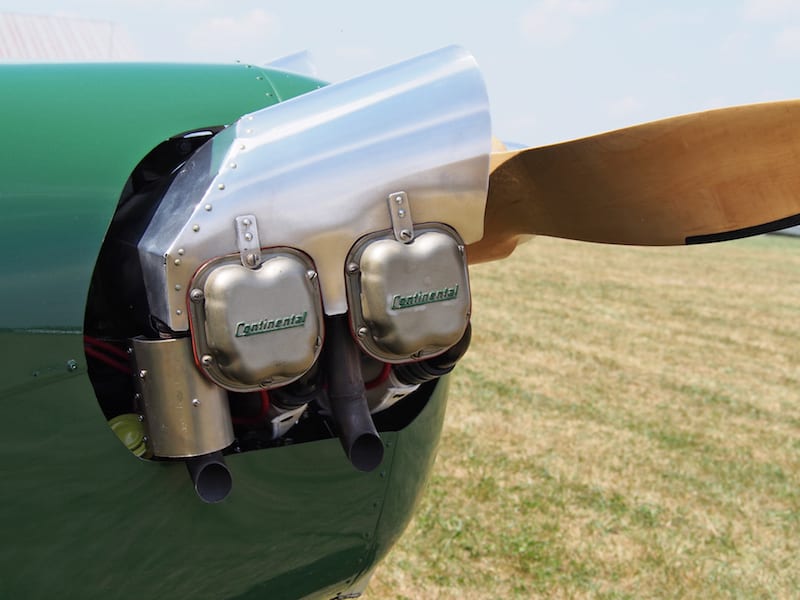
The co-builders fabricated the eyebrows-and cowling from 6061-aluminum. Photo by SparkyBarned Sargent
“We ended up building the turtle deck with aluminum stringers over aluminum bulkheads, instead of wood, and we used a fiberglass J-3 nosebowl from Wag-Aero,” says Rick. “The rest of the cowling, including the eyebrows, are fabricated from 6061 aluminum.”
They also made a few other mods to the original design. They made the entrance door fold down, instead of forward; eliminated the stringer from the side of the fuselage; installed 6.00-6 Cleveland wheels and brakes; and adorned the hubcaps with a quasi “yin-yang” design.
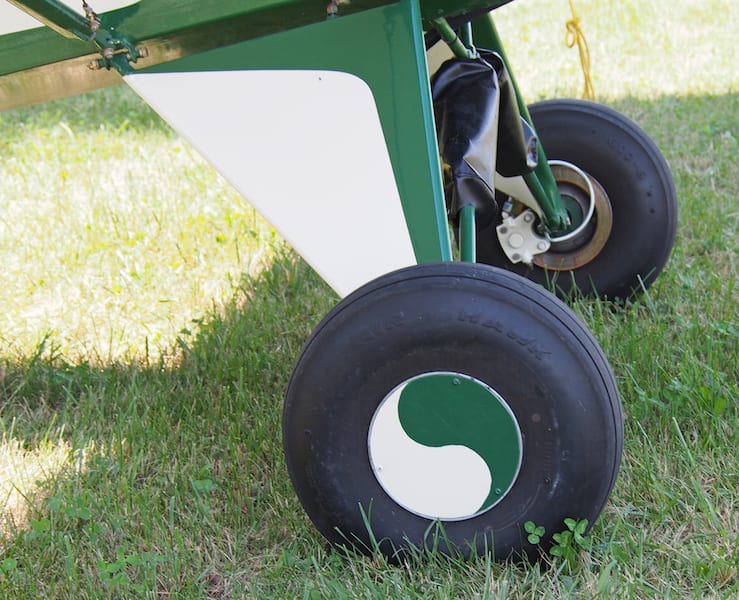
Note the quasi “yin-yang” pattern on the hubcaps. Photo by Sparky Barnes-Sargent
“We used the Air Tech covering process, and sprayed on the Daytona White and #379 Dark Green with a high-volume, low-pressure system,” shares Rick. “I had never used Air Tech before, and I found it easier than the Stits. The coatings went on quite nice, resulting in a very nice finish.”
The plans for the Pober Pixie call for a 60-hp Volkswagen engine, but the friends installed the Continental A-65-8 which came with the project, along with a Culver 72/44 wood propeller.
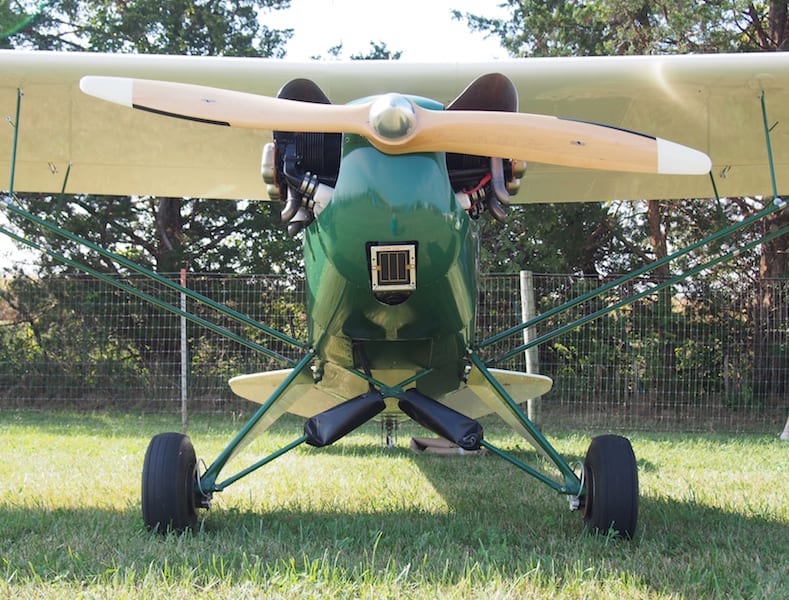
Photo by Sparky Barnes Sargent
The engine is gravity fed by a 12-gallon riveted (not welded) fuel tank, which basically comprises the center section of the wing. Since the A-65 is started by hand-propping, Rick and Tom installed a tie-down tail hook that can be conveniently released from within the cockpit.
The Pixie has been flown 55 hours so far, and its longest flight was a 35-mile jaunt to Blakesburg, Iowa.
“I’ve flown a lot of airplanes,” reflects Rick, smiling. “This one is a very nice, gentle-flying airplane. It’s a delight to fly, and with its push-tube operated, full-span ailerons and cable-operated rudder and elevator, control inputs are well coordinated.”
The Pober Pixie’s parasol wings span nearly 30 feet, and from nose to tail, the Pixie measures 18 feet 2 inches. Its empty weight is 613 pounds, with a gross weight of 950 pounds.
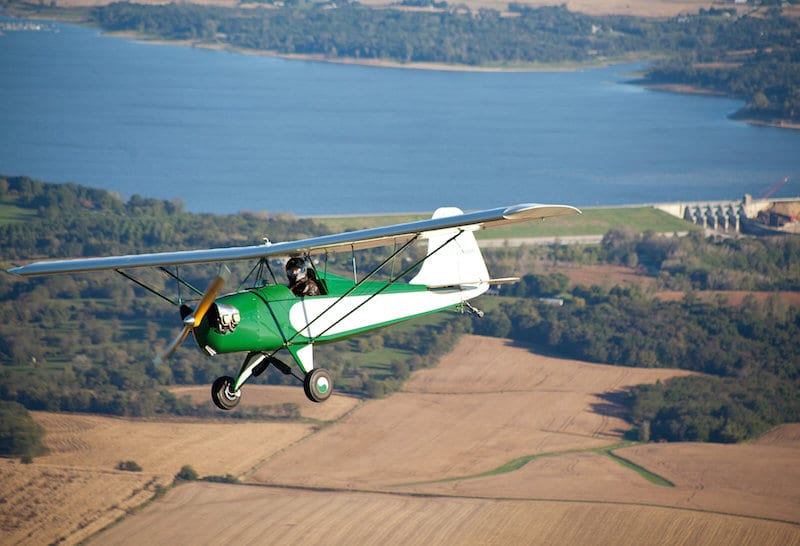
Photo by Shane and Megan Vande Voort
“It takes off and lands around 40 mph, and stalls around 30 to 35 mph,” reports Rick. “It has a pretty mild stall, because there is a fair amount of washout in the wings, which allow the tips to stall first. It can cruise around 85 mph at 2150 rpms.”
If the friends had any complaint about flying their Pixie, it would be that “it’s pretty drafty, and not a comfortable cockpit for somebody who is 6 feet tall, because the seatback is almost straight up and down, and you have to sit with your knees up,” according to Rick.
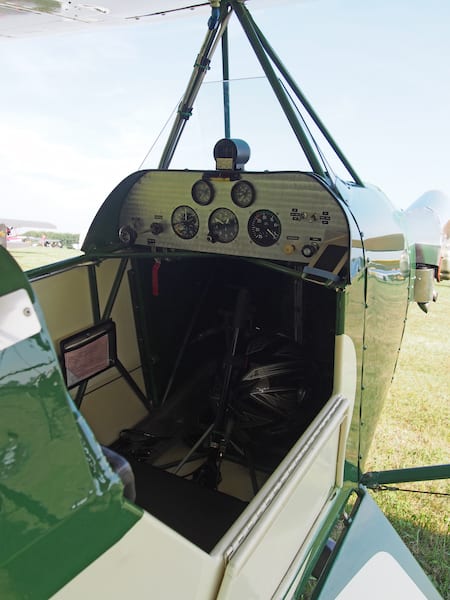
Photo by Sparky Barnes Sargent
“But it’s quite a roomy cockpit width-wise, so if you’re not a tall person, it would be fairly comfortable,” he adds. “And I’ve found that it’s much quieter, and much less windy, when cruising at 75 mph at 1800 rpm.”
Overall, Rick and Tom are pleased with the time and energy they’ve invested in their Pixie.
“The Pixie is a lot of fun to fly on only 4 to 4-½ gallons per hour,” Tom says.
“It’s just been a fun project, and it’s a really nice grassroots, grass-field STOL airplane that is economical to operate,” Rick concludes.
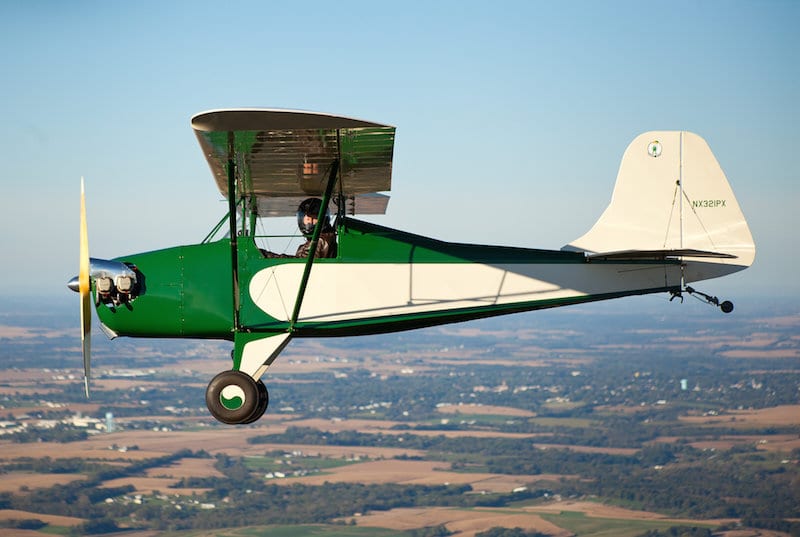
Photo by Shane and Megan Vande Voort
Source: http://generalaviationnews.comThe playful Pober Pixie